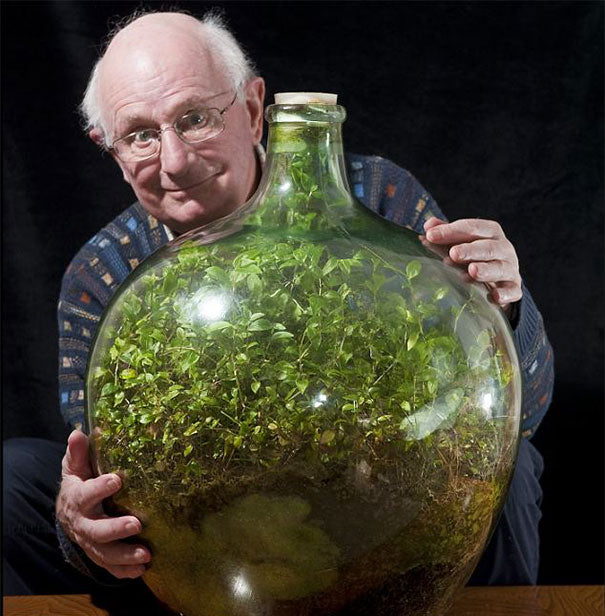Introduction
Have you ever imagined a garden thriving in complete isolation for over 60 years? Welcome to the fascinating world of David Latimer and his sealed terrarium, an astonishing example of sustainability and the resilience of nature. This blog post delves into the story of Latimer's terrarium, unveiling its significance and inspiring you to create your own miniature ecosystem.
Who is David Latimer?

(via: dailymail)
David Latimer, a name synonymous with innovative gardening, sparked global interest with his sealed bottle garden. An enthusiast in sustainable practices, Latimer's experiment began in 1960, forever changing perceptions about closed ecosystems and plant resilience.
The Birth of a Sealed Terrarium
In 1960, Latimer planted a seedling in a 10-gallon glass bottle out of sheer curiosity. Little did he know, this act would birth a self-sustaining ecosystem that would thrive for decades. He chose a spiderwort plant, known for its hardiness, and placed it in a nutrient-rich substrate, sealing the bottle after a final watering in 1972.
The Science Behind the Sealed Terrarium
Latimer's terrarium is a perfect example of a closed ecological system. Inside the bottle, a mini water cycle occurs. Moisture from the soil and plants evaporates, condenses on the glass, and trickles back into the soil. Photosynthesis provides the necessary oxygen, while the plant utilizes the carbon dioxide produced by decomposing organic matter.
The Growth and Evolution of Latimer's Terrarium
Over the years, the terrarium has witnessed remarkable growth, with the spiderwort flourishing and creating a lush green canopy. This evolution is a testament to nature's adaptability and the potential of sustainable, closed ecosystems.
Lessons from the Latimer Terrarium
Latimer's experiment is more than a gardening marvel; it's a lesson in ecology and sustainability. It demonstrates how ecosystems can maintain themselves and the importance of balance in nature. For modern gardeners and environmental enthusiasts, it serves as a source of inspiration and a model for sustainable living.
How to Create Your Own Sealed Terrarium
Creating your own sealed terrarium is a fun and educational project. Start with a clear glass container, add a layer of stones for drainage, followed by soil. Choose small, hardy plants like ferns or mosses. Once planted, water sparingly, seal the container, and place it in a bright area without direct sunlight. Watch as your miniature ecosystem thrives with minimal intervention!
Conclusion
David Latimer's sealed terrarium is not just a gardening achievement; it's a symbol of resilience and sustainability. It challenges us to rethink our relationship with nature and inspires us to explore the possibilities of self-sustaining ecosystems. Whether you're a seasoned gardener or a curious beginner, the world of terrariums offers endless possibilities for exploration and learning.




